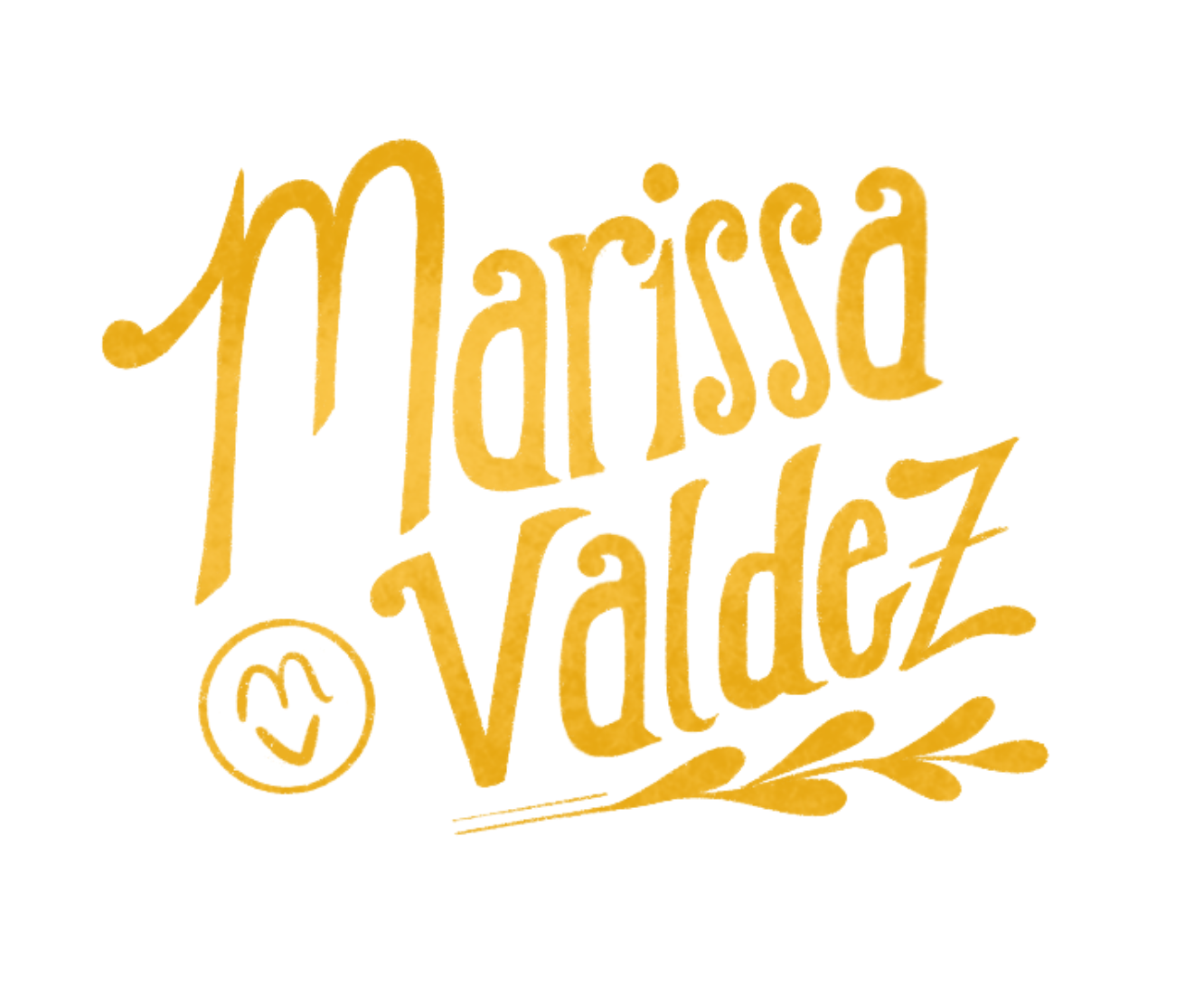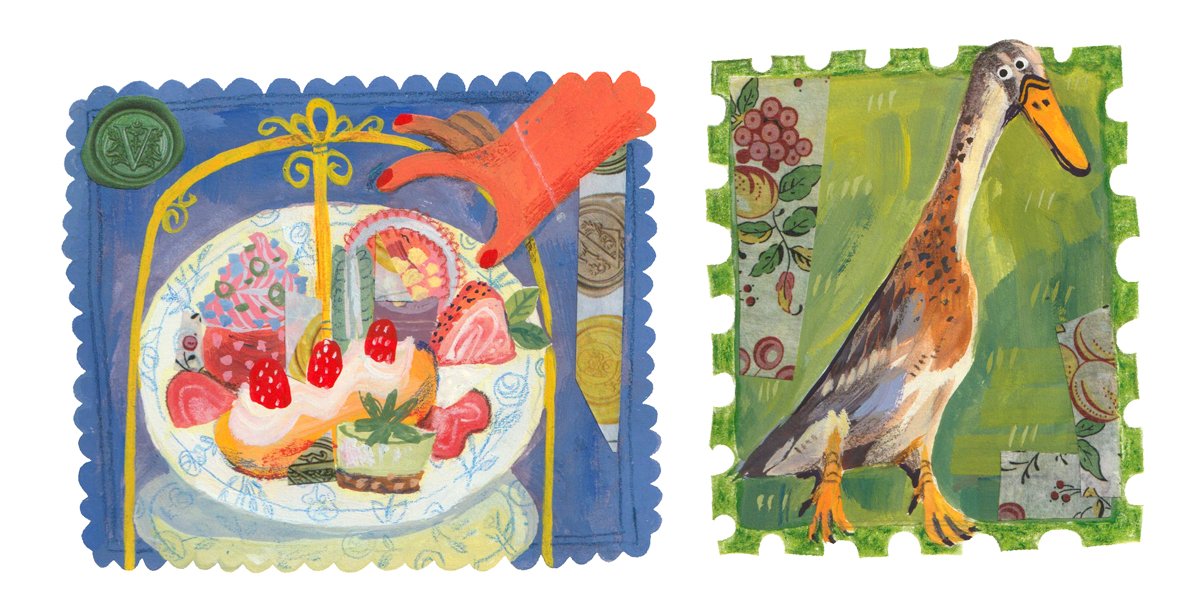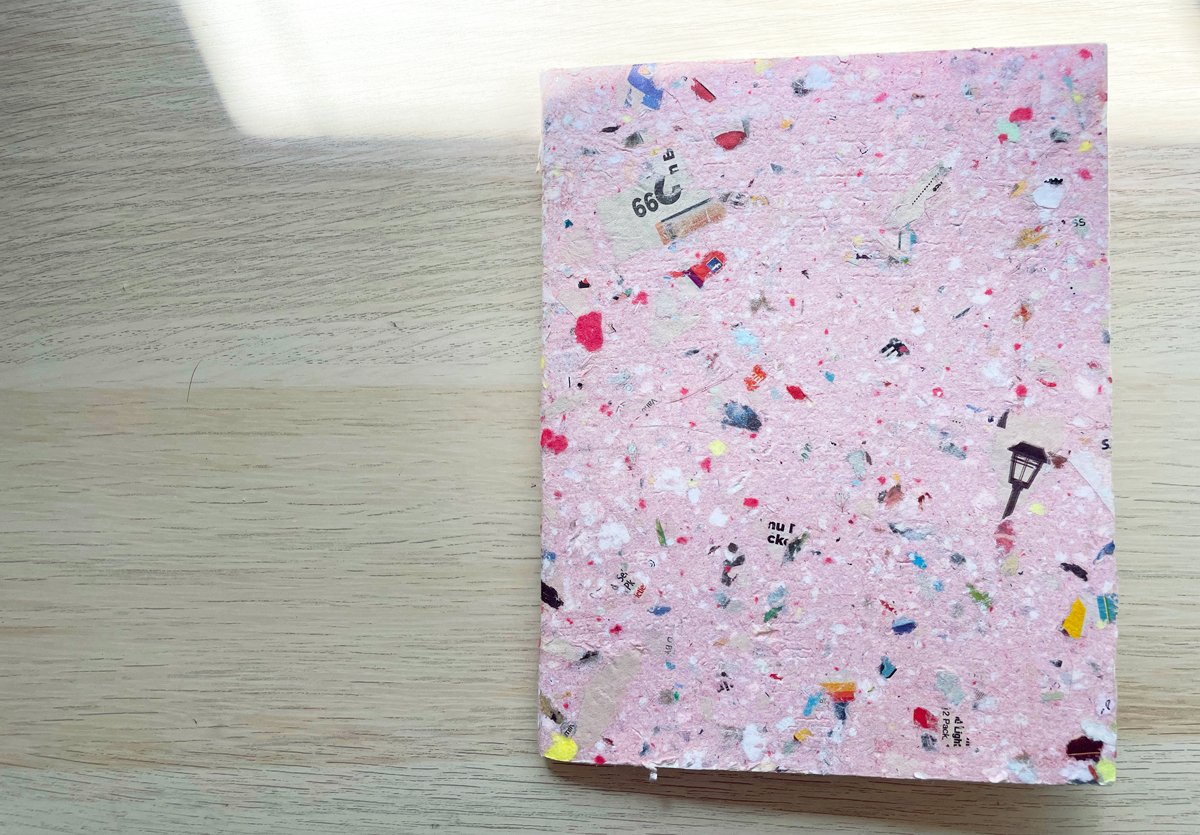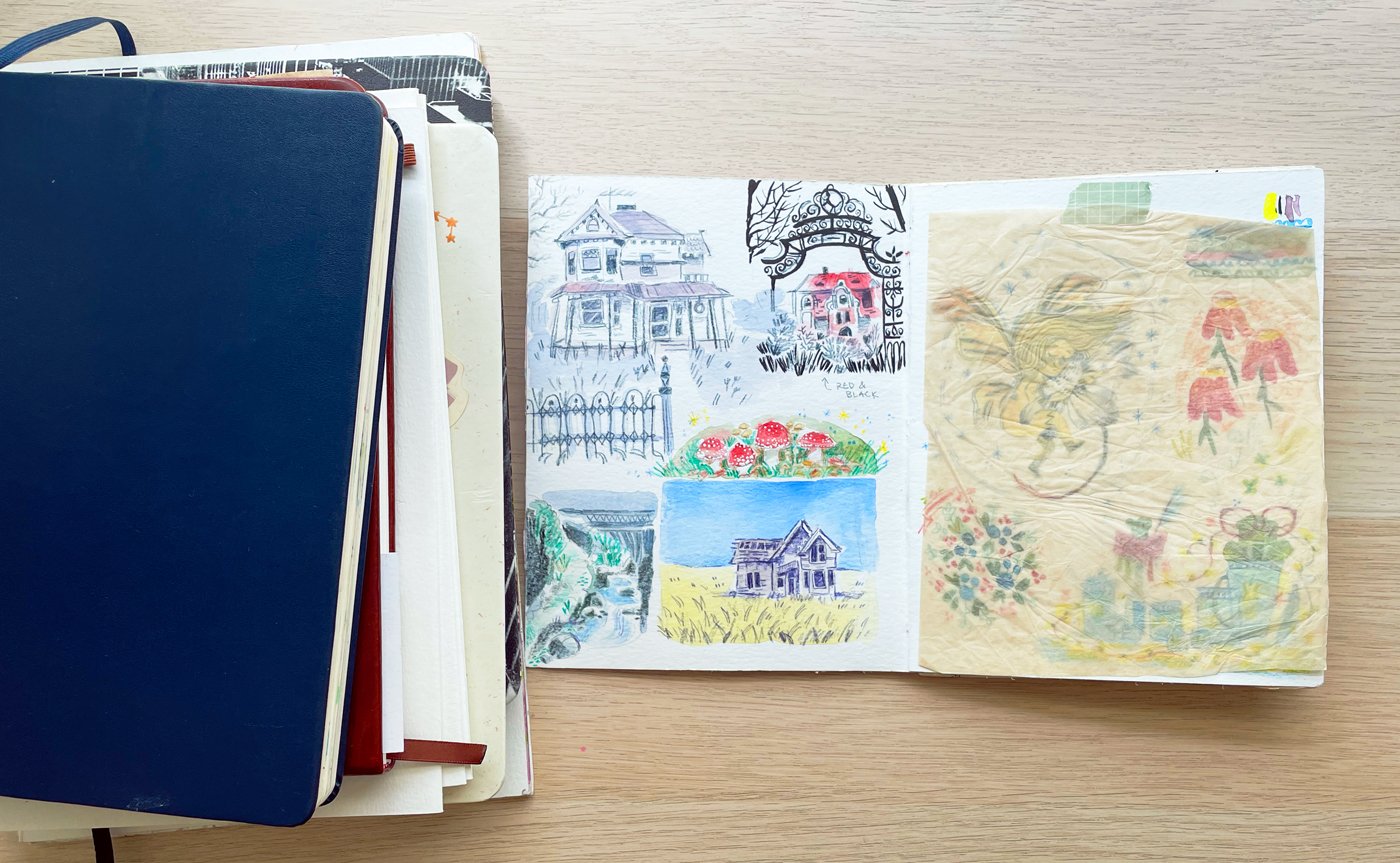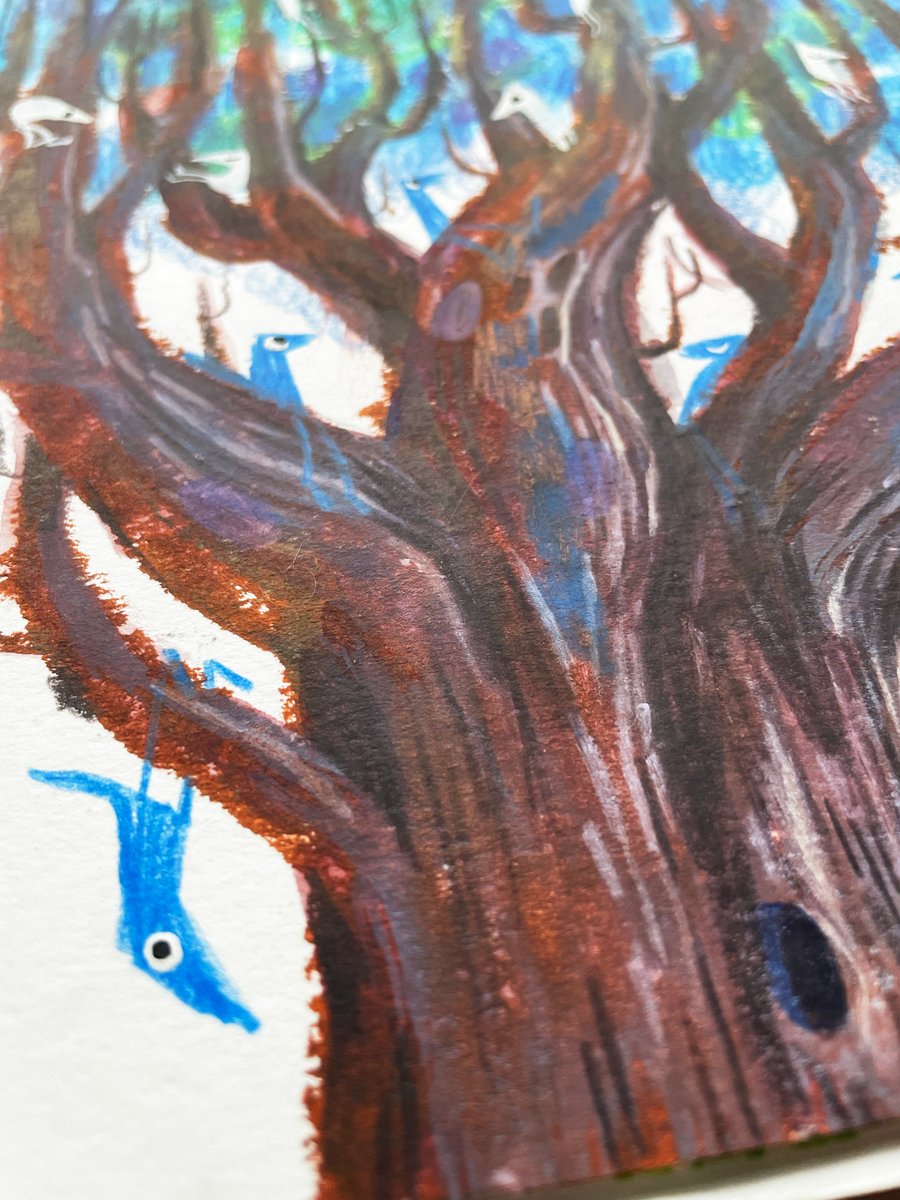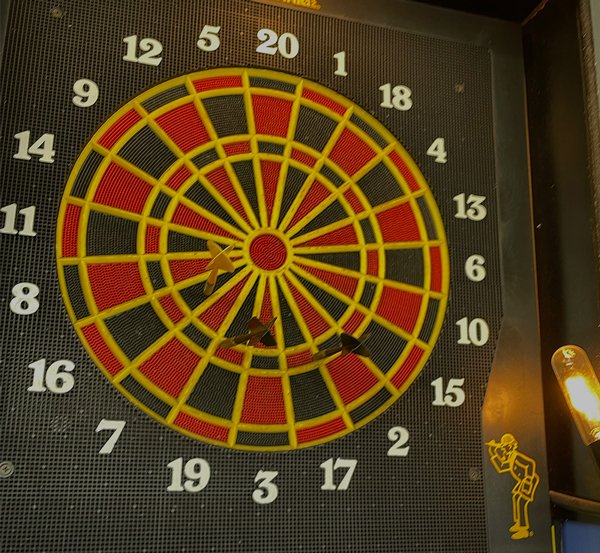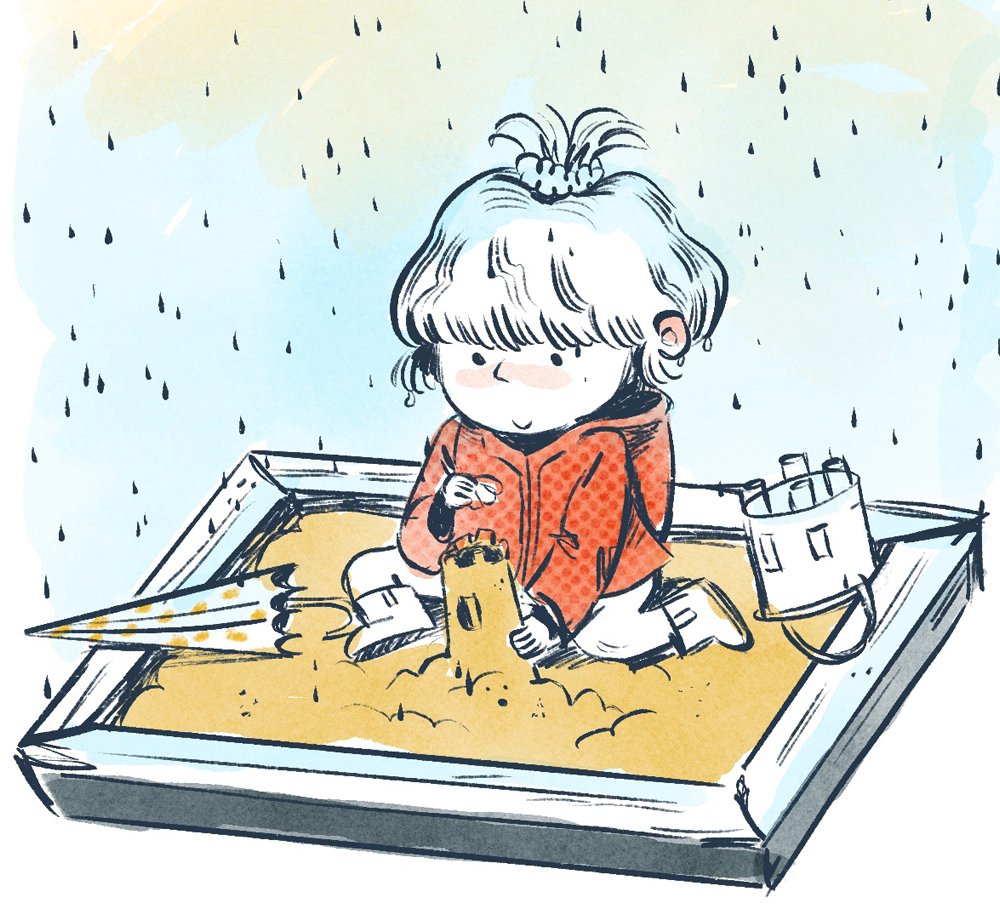Back in March of this year, I wrote in my newsletter that I would share how I created the illustrations for the first (and only) chapter book I’ve worked on: Esme’s Birthday Conga Line. I can FINALLY say that it’s here!
It’s the first time I’ve shared my book making process and I’ve had some nervous flutters about it. My sketches aren’t always the cleanest and my process can be messy, but this blog is all about sharing a more authentic me outside of social media. And what better way to do that than sharing both the good and the bad?? Even if that’s a little nerve-racking…
ESME’S BIRTHDAY CONGA LINE, written by Lourdes Heuer (check out her other great work here!) and published by Tundra Books.
Esme lives with her grandparents on the uppermost floor of the topmost best building. It’s her birthday. Mimi and Pipo gave her a beautiful guitar. But they didn’t plan a birthday party.
Esme thinks this is the way with grandparents. They don’t know about parties or piñatas or birthday cake. No problem! Esme is great at problem solving.
With the help of her cat, El Toro, and a LOT of help from her neighbors in the topmost best building, the irrepressible Esme gets the birthday party of her dreams.
I first learned about Esme through my agent, who approached me with the story right after I signed on with her. When I read the manuscript, I was immediately entranced. A funny chapter book about a confident girl and her cat planning a birthday?? It’s like the author, Lourdes, knew EXACTLY what I was like as a kid and knew exactly what I would love to draw as an adult. I couldn’t wait to start sketching out this book!
But where did I actually start?
Research
This is always the hard part with books. Ideas are swirling around in your head, but you need to start making decisions about style, color, designs. It can be a little daunting knowing that you’re creating a whole WORLD for your story.
I started by reading the manuscript over and over again until I got a sense of what all the characters were like. At this point, I can usually see some form of the story drawn out in my head. After that, I began to research. My go-to research tool is a handy-dandy Pinterest board so I pinned scores of images of hispanic culture, senior citizens, apartment buildings, cityscapes, piñatas, cats, and matadors to an Esme specific board. Research is a pretty fun part of the process for me, especially when I can go down a few rabbit holes. And with experience, I’ve found that the more research you do up front, the faster the rest of the process becomes.
Here you can see pins for fabric used by Esme’s seamstress neighbor. I find that if you work off of real objects and locations for props and backgrounds, the more believable they end up looking in your final illustrations.
After that, I created a mood-board (see image below) that I sent to our editor and art director. This one was especially simple, but having a visual representation of what you want the book to feel like can help the editor and art director understand your overall vision. It’s a quick thing to create and it’s great to look back at when you’re working on the book to make sure you’re sticking to the proposed mood too.
Character Designs
Oh the characters! Outfits, hairstyles, TURNAROUNDS. Creating characters is my favorite part of the process! When I first envisioned Esme, I saw her being a small but spunky Latina girl. While Lourdes wrote SO MUCH of Esme’s personality into the manuscript, she never really specified what Esme looked like or what her heritage was. Other than Esme having glasses and knowing that her favorite color was green, everything else was up to me. Because I’m from Mexican heritage, I wanted to mirror that part of me with Esme. A lot of creating characters, in my experience, is finding that aspect of yourself that you can give to the characters to flesh them out.
Different versions of Esme and her cat, El Toro (who ended up looking a lot like my cat…).
I think drawing from your own experiences and personality adds a fullness to the character that would be hard to achieve otherwise.
With Esme, I mirrored my heritage, my somewhat bushy eyebrows, and the frizzy hair I had as a kid. But don’t be fooled: I didn’t draw her perfectly the first time. Esme went through MANY design iterations. At one point she had big fluffy pigtails, she donned a tutu at another, I even gave her a pug nose which I eventually axed in the end.
This book ended up being a character development BEAST. There are fourteen characters in total and I wanted to make sure that each character matched Esme’s style but was also completely distinctive in their own way. Lourdes had created characters with such unique personalities anyway so it wasn’t too difficult to make each character look distinct and interesting in the sketches. Drawing out scenes with fourteen characters WAS a little time consuming though!
A couple of my favorite characters are El Toro, who originally had a luchador mask design on his face (check out the image above), the Garcia Twins who are 100% modeled after the twins from The Shining and the Mora sisters, who had the coolest apartment in the world to draw.
After creating a character sheet, I sent the finalized sketches of Esme, El Toro and the rest of the gang to our editor who shared them with the art director and Lourdes. I received some feedback and with a few tweaks we decided on the dot eye version of Esme with a ponytail. Surprisingly, Lourdes asked if we could change Esme’s outfit to a pair of pink overalls, which I LOVED. Lourdes must be a mind reader, because I had initially thought of putting Esme in a pair of overalls, but, at the last minute, decided that might be a little too average looking. Stick with your gut, friends!
Thumbnails and Sketches
Esme was especially fun to draw sketches for because the manuscript was so funny but roomy enough that I felt like I could add in my humor to the story as well.
I started the sketches when the AD, John, sent over page layouts that included the text. These outlined, on each page, where I needed to place my illustrations in coordination with the text. I printed the page layouts at about 20% of their normal size out onto paper and started drawing VERY sketchy initial thumbnails with pencil. I’m talking shapes and scribbles, people. Nothing fancy!
I printed the layouts small because I think thumbnails are just that: thumb size. Starting out teeny tiny is great because I can focus on composition, bigger shapes, and flow lines instead of worrying about the smaller details. This definitely doesn’t always happen but it’s incredible looking back on the sketches and seeing how closely the finals actually mirrored the thumbnails.
After that initial pass at the thumbnails, I cleaned them up to a state where they were readable enough to send to the editor. Like I mentioned earlier, I’m a pretty messy sketcher, so I have to go through several passes to get my sketches at a stage where objects and characters actually look IDENTIFIABLE.
I mean, look at this thing! What is it? Some sort of spider? Is that cat flying in the air in the background??
After sketches were sent to the editor, I was sent feedback about potential revisions. There were a couple places where the sketches needed to be revised (usually in spots where I made the scene a little TOO ridiculous, like in the sketch below) but most images stayed as is from the original thumbnails. Little to no revisions don’t always happen but let me tell you, when it does it FEELS GREAT!
Can we get a “bwahaha” in here??
Color Palette
Color is not something that comes naturally to me, so choosing a color palette for Esme was a challenge. I created a few initial color studies but it felt like nothing was gelling until I received an email from the editor and Lourdes.
“Could we incorporate a Cuban color palette into the illustrations?”
Uh, OF COURSE WE COULD. I immediately started looking at Cuban buildings and fashion and saw that Cuba is wonderfully pastel. Voila! Lightbulb moment! Eureka! My issues with the color palette were solved. When I started using pastel pinks, greens, blues and yellows, everything made sense. This is a textbook example of how collaboration can lead to MAGIC. And if you’re illustrating books, there’s a good chance you’re most likely a fan of working with other people anyway.
Finals
FINALS. Oh, finals. Unlike character designs, finals are NOT my favorite part of the process. You might call this the bad that I was talking about earlier… Finishing art is a long and physically demanding task for me, especially because my process includes drawing on a lot of layers and drawing in a lot of tiny details. This is when I put my head down, put on a good podcast or audio book and just draw, pretty robotically, for 8 to 12 (sometimes 16…) hours a day.
Some pages were harder to finish than others and, at times, I would find myself starting to doubt whether the illustrations looked good or not. But the wonderful thing about Esme and El Toro was that I was always entertained. Every time I was in a rush to finish a page, a witty joke that Lourdes wrote would make me laugh and brighten my day.
In the end it took me about two months to finish the forty spreads, and when I finished, I was really proud of what I had created.
I finished the illustrations for Esme in Procreate, using watercolor brushes for the base colors and a chalk brush for details, with some handmade textures sprinkled in at the end. The nice thing was that I had already done work figuring out the colors for each page, so that made the finals just that much easier to work through. Some books have stricter time limitations so I’m not always able to create color studies, but when I do, it makes the whole process that much easier! It’s something I now strive to do for every book.
Sketches to finals for one funky conga line illustration.
From there, I received proofs in the mail and looked them over. The proofs at first looked pretty desaturated partially because the printer printed them out that way and partially because I wasn’t great at not using CMYK friendly colors at that time. I’ve learned since then! After some lovely tweaking by the art director, I was sent another round of proofs that looked PERFECT. Praise all the art directors out there! Unfortunately, I had to leave all my proofs behind when I moved overseas so I don’t have any pictures of them to show in this post.
(Just imagine me in a lofty, Victorian library surrounded by large sheets of glossy paper filled with swirling images of piñatas, cats, and elevator fires, thoughtfully stroking my chin and smoking a pipe while looking at the proofs. That’s not what it was like AT ALL but that sounds pretty cool, right?)
Once the proofs were approved I had the wonderful pleasure of receiving my illustrator copies of Esme’s Birthday Conga Line in the mail! WOOOO!! There’s nothing more exciting than holding the real-life book that you helped create.
Any insecurities I may have about my illustrations all go away when I flip through pages of the final book. There’s something mesmerizing about seeing the art-directed-text on the page with your illustrations. You spend so much time working on the art that it’s easy to forget see how the text is going to coordinate with your illustrations on the finished pages. It’s magic when you see everything together! One of the things that makes children’s books so great in my opinion.
And that’s it!
An in-depth overview of how I created the illustrations for one of my favorite books of all time, Esme’s Birthday Conga Line, written by Lourdes Heuer and published by Tundra Books. I hope this blog post helped reveal any mystery about illustrating books as well; it’s a process that differs from artist to artist and it can take a long time, but it’s not impossible and if you’re trying to make a book now, you can do it! Even if the process gets a little messy.
Esme’s Birthday Conga Line is out now! If you liked what you saw in this blog post, you can grab the book at your local independent bookstore, at your local library, or through Amazon.
Thanks for sticking around, hope you have a very spooky Halloween. Can’t wait to talk to you more next month ❤️
